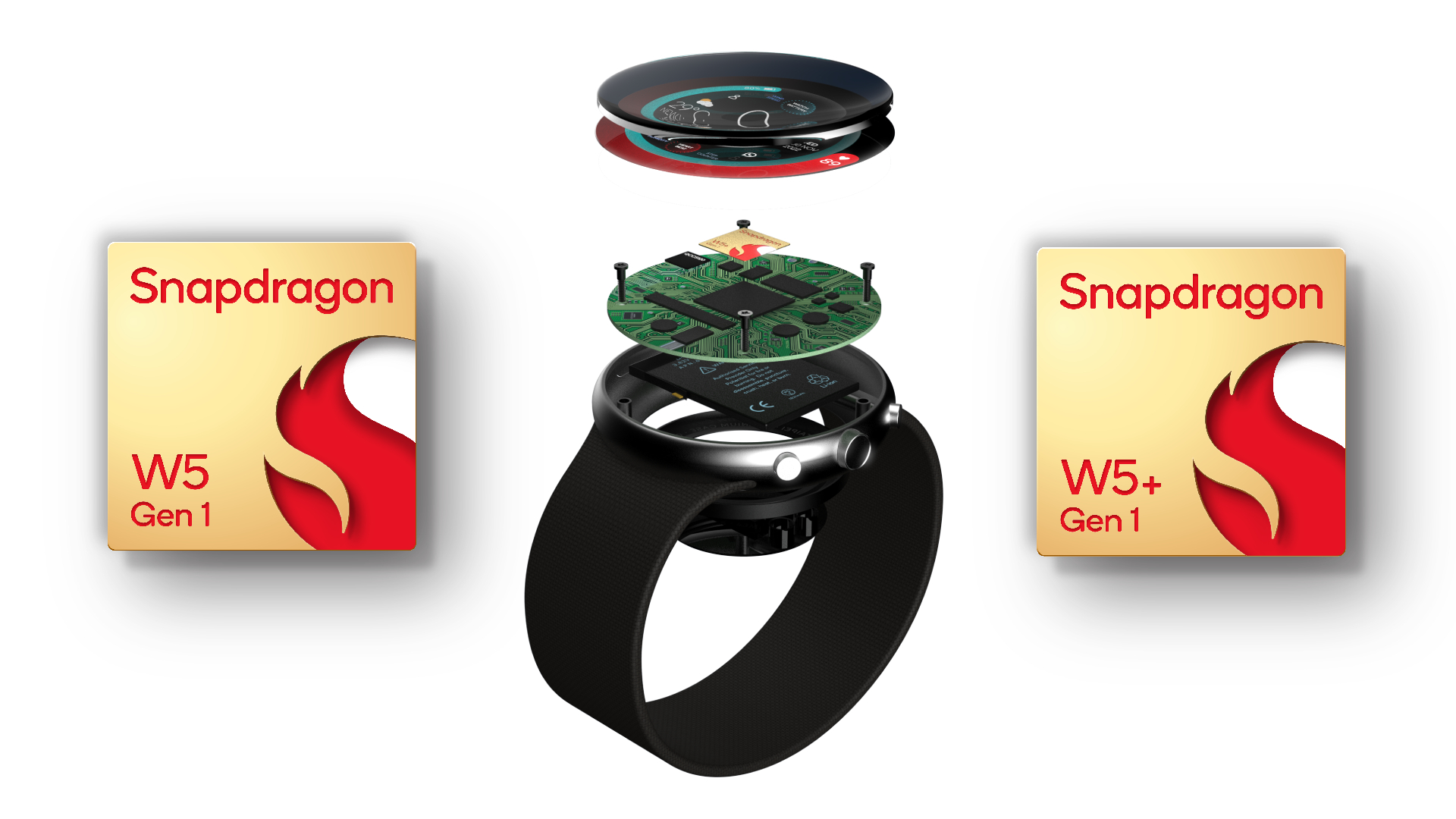Smartwatches could soon double their battery life, thanks to Qualcomm’s new chip
Smartwatch, meet the Snapdragon W5 Plus Gen 1

The wearables market is more diverse than it's ever been, but if there's one constant, it's the battle between richer functionality and preserving battery life; one of a number areas Qualcomm's newly-unveiled Snapdragon W5 Gen 1 and W5 Plus Gen 1 chipsets hope to address.
The two new chips promise huge gains in terms of both performance and functionality, as well as battery life – one of the biggest hurdles makers of even the best smartwatches are constantly struggling to improve.
Qualcomm's last major wearable chipset release was just over two years ago – in the form of the Snapdragon Wear 4100 platform – and like its predecessor, 2022's offering also comes in two flavors: the Snapdragon W5 Gen 1 and the W5 Plus Gen 1 (styled as 'W5+ Gen 1'), which have received a rebrand to complement the naming of the company's latest smartphone-centric chips; retracting the 'Wear' in 'Snapdragon Wear' down to simply 'W' and adding 'Gen 1' on the end.
Beyond the name, the two models offer a similar gamut of benefits, made possible by the move to a much more refined 4nm process (down from 12nm on the 4100 line). Building on a 30% smaller process offers the biggest improvement, creating a much more efficient chip which, in turn, means better battery life.
The new chip design also features dedicated low-power 'islands' for Audio, WiFi and GPS, and supports new low-power states, dubbed 'Deep Sleep' and 'Hibernate', that help push battery longevity even further.
The 'Plus' also denotes an additional co-processor that shares the load with the main W5 chip with its own 'RTOS' to support a wearable's low-power functions.
Compared to the Snapdragon Wear 4100+, Qualcomm claims that an equivalent Snapdragon W5+ Gen 1-powered smartwatch serves up double the battery life, twice the performance and higher fidelity experiences.
Get daily insight, inspiration and deals in your inbox
Sign up for breaking news, reviews, opinion, top tech deals, and more.
In real-world terms, this means the next wave of smartwatches to use these Qualcomm chips will serve up smoother and more responsive user experiences than the current crop, while going twice as long between charges.
The Oppo Watch 3 is already confirmed to be relying on a W5 Gen 1 and will arrive sometime in August, while Mobvoi has committed to employing the new top-tier W5+ Gen 1 in its next smartwatch.
Analysis: should the Apple Watch be worried?
One of the big upgrades that Apple added to the current Apple Watch 7 was fast charging, offering 33% faster charging compared to Apple Watch 6, but the company was already playing catch-up with Qualcomm's last wearable silicon in that regard, with offerings like the Snapdragon Wear 4100 Plus-powered Fossil Gen 6 boasting its own fast charging that refilled the phone to 80% charge in just 30 minutes.
With the advancements that the W5 line bring to the table, that gap is only getting larger, unless Apple pulls out something particular special in the power efficiency department on the Apple Watch 8.
The flip-side is that, despite the Qualcomm's prominent market position and – in the case of the W5 line, a direct effort in optimise for Google's wearable platform, Wear OS 3 – its wearable chips often struggle to find a foothold behind both the Apple Watch and Samsung's popular Galaxy Watch line.

Alex joined as TechRadar's Senior Phones Editor in June 2022, but brings over a decade's worth of experience to the role, with an expertise in smartphones, tablets and wearables. He's covered keynotes hosted by the biggest brands and attended the launches for some of the most influential mobile products of the last few years. His experience was amassed at some of the most reputable consumer technology publications out there, including GSMArena, TechAdvisor and Trusted Reviews.